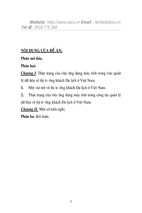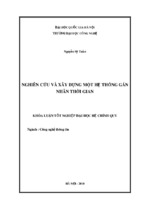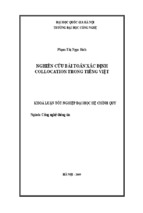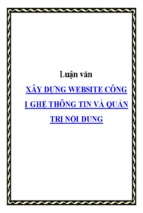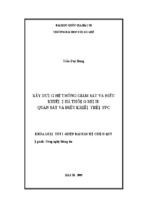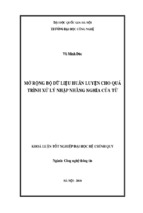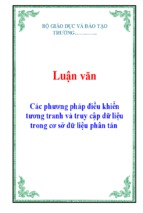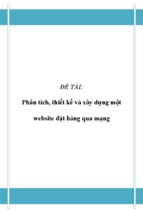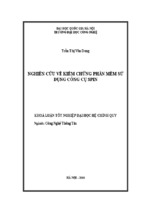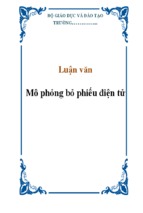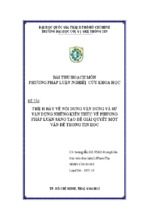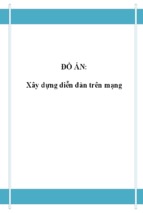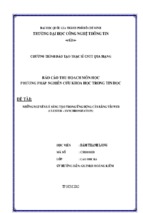1
YEAR
UPGRADE
BUYER PROTECTION PLAN
E-MAIL VIRUS
PROTECTION
HANDBOOK
“The E-mail Virus Protection Handbook is
the only book that shows you what might
be lurking in your e-mail. It's our e-mail
Bible and it should be yours!”
—Brad Goodyear,
President
www.virus.com
FREE Monthly
Technology Updates
One-year Vendor
Product Upgrade
Protection Plan
FREE Membership to
Access.Globalknowledge
Brian Bagnall, Sun Certified Java Programmer and Developer
Chris O. Broomes, MCSE, MCP+I, CCNA
Ryan Russell, CCNP, and author of the best-selling
Hack Proofing Your Network
Technical Editor:
James Stanger, MCSE, MCT, CIW Security Professional
119_email_FM
10/6/00
12:07 AM
Page 1
[email protected]
With over 1,500,000 copies of our MCSE, MCSD, CompTIA, and Cisco
study guides in print, we have come to know many of you personally. By
listening, we've learned what you like and dislike about typical computer
books. The most requested item has been for a web-based service that
keeps you current on the topic of the book and related technologies. In
response, we have created
[email protected], a service that
includes the following features:
■
A one-year warranty against content obsolescence that occurs as
the result of vendor product upgrades. We will provide regular web
updates for affected chapters.
■
Monthly mailings that respond to customer FAQs and provide
detailed explanations of the most difficult topics, written by content
experts exclusively for
[email protected].
■
Regularly updated links to sites that our editors have determined
offer valuable additional information on key topics.
■
Access to “Ask the Author”™ customer query forms that allow
readers to post questions to be addressed by our authors and
editors.
Once you've purchased this book, browse to
www.syngress.com/solutions.
To register, you will need to have the book handy to verify your purchase.
Thank you for giving us the opportunity to serve you.
119_email_FM
10/6/00
12:07 AM
Page 2
119_email_FM
10/6/00
12:07 AM
Page 3
E-MAIL VIRUS
PROTECTION HANDBOOK
119_email_FM
10/6/00
12:07 AM
Page 4
Syngress Publishing, Inc., the author(s), and any person or firm involved in the writing, editing, or production
(collectively “Makers”) of this book (“the Work”) do not guarantee or warrant the results to be obtained from the
Work.
There is no guarantee of any kind, expressed or implied, regarding the Work or its contents. The Work is sold
AS IS and WITHOUT WARRANTY. You may have other legal rights, which vary from state to state.
In no event will Makers be liable to you for damages, including any loss of profits, lost savings, or other incidental or consequential damages arising out from the Work or its contents. Because some states do not allow
the exclusion or limitation of liability for consequential or incidental damages, the above limitation may not
apply to you.
You should always use reasonable case, including backup and other appropriate precautions, when working
with computers, networks, data, and files.
Syngress Media® and Syngress® are registered trademarks of Syngress Media, Inc. “Career Advancement Through
Skill Enhancement™,” “Ask the Author™,” “Ask the Author UPDATE™,” “Mission Critical™,” and “Hack
Proofing™” are trademarks of Syngress Publishing, Inc. Brands and product names mentioned in this book are
trademarks or service marks of their respective companies.
KEY
001
002
003
004
005
006
007
008
009
010
SERIAL NUMBER
9TM1L2ADSE
XPS1697TC4
CLNKK98FV7
DC5EPL4RL6
Z74DQ81524
PJ62NT41NB
4W2VANZX44
V8DF743RTD
65Q2M94ZTS
SM654PSMRN
PUBLISHED BY
Syngress Publishing, Inc.
800 Hingham Street
Rockland, MA 02370
E-mail Virus Protection Handbook
Copyright © 2000 by Syngress Publishing, Inc. All rights reserved. Printed in the United States of America.
Except as permitted under the Copyright Act of 1976, no part of this publication may be reproduced or distributed in any form or by any means, or stored in a database or retrieval system, without the prior written permission of the publisher, with the exception that the program listings may be entered, stored, and executed in a
computer system, but they may not be reproduced for publication.
Printed in the United States of America
1 2 3 4 5 6 7 8 9 0
ISBN: 1-928994-23-7
Copy edit by: Eileen Kramer
Technical edit by: James Stanger
Index by: Rober Saigh
Project Editor: Katharine Glennon
Distributed by Publishers Group West
Proofreading by: Adrienne Rebello
Technical Review by: Stace Cunningham
Page Layout and Art by: Shannon Tozier
Co-Publisher: Richard Kristof
119_email_FM
10/6/00
12:07 AM
Page v
Acknowledgments
We would like to acknowledge the following people for their kindness and
support in making this book possible.
Richard Kristof, Duncan Anderson, Jennifer Gould, Robert Woodruff, Kevin
Murray, Dale Leatherwood, Shelley Everett, Laurie Hedrick, Rhonda
Harmon, Lisa Lavallee, and Robert Sanregret of Global Knowledge, for their
generous access to the IT industry’s best courses, instructors and training
facilities.
Ralph Troupe and the team at Rt. 1 Solutions for their invaluable insight
into the challenges of designing, deploying and supporting world-class
enterprise networks.
Karen Cross, Kim Wylie, Harry Kirchner, John Hays, Bill Richter, Kevin
Votel, Brittin Clark, Sarah Schaffer, Luke Kreinberg, Ellen Lafferty and
Sarah MacLachlan of Publishers Group West for sharing their incredible
marketing experience and expertise.
Peter Hoenigsberg, Mary Ging, Caroline Hird, Simon Beale, Julia Oldknow,
Kelly Burrows, Jonathan Bunkell, Catherine Anderson, Peet Kruger, Pia
Rasmussen, Denelise L'Ecluse, Rosanna Ramacciotti, Marek Lewinson,
Marc Appels, Paul Chrystal, Femi Otesanya, and Tracey Alcock of Harcourt
International for making certain that our vision remains worldwide in
scope.
Special thanks to the professionals at Osborne with whom we are proud to
publish the best-selling Global Knowledge Certification Press series.
v
119_email_FM
10/6/00
12:07 AM
Page vi
From Global Knowledge
At Global Knowledge we strive to support the multiplicity of learning styles
required by our students to achieve success as technical professionals. As
the world's largest IT training company, Global Knowledge is uniquely
positioned to offer these books. The expertise gained each year from providing instructor-led training to hundreds of thousands of students worldwide has been captured in book form to enhance your learning experience.
We hope that the quality of these books demonstrates our commitment to
your lifelong learning success. Whether you choose to learn through the
written word, computer based training, Web delivery, or instructor-led
training, Global Knowledge is committed to providing you with the very
best in each of these categories. For those of you who know Global
Knowledge, or those of you who have just found us for the first time, our
goal is to be your lifelong competency partner.
Thank your for the opportunity to serve you. We look forward to serving
your needs again in the future.
Warmest regards,
Duncan Anderson
President and Chief Executive Officer, Global Knowledge
vi
119_email_FM
10/6/00
12:07 AM
Page vii
Contributors
Philip Baczewski is the Associate Director of Academic
Computing Services at the University of North Texas Computing
Center. He serves as project manager for university student
Internet services, and works with client server implementations
of IMAP, IMSP, SMTP, and LDAP protocols. Philip also provides
technical consultation support in the areas of mainframe and
UNIX programming, data management, electronic mail, and
Internet services. Philip holds his Doctorate in Musical Arts,
Composition from the University of North Texas.
Brian Bagnall is a Sun Certified Java Programmer and
Developer. His current project is designing and programming a
distributed computing effort for Distco.com. Brian would like to
say thanks to Deck Reyes for his help with the material. He
would also like to thank his family for their support. Contact
Brian at
[email protected].
Chris O. Broomes (MCSE, MCP+I, MCT, CCNA) has over seven
years of networking experience. He started his career as a consultant at Temple University, and has worked with organizations
such as Morgan, Lewis & Bockius, Temple University Dental
School, and Dynamic Technologies, Inc. Currently, Chris works
in Philadelphia as a Network Administrator at EXE Technologies,
Inc., a global provider of business-to-business e-fulfillment solutions.
vii
119_email_FM
10/6/00
12:07 AM
Page viii
Patrick T. Lane (MCSE, MCP+I, MCT, CIW Foundations, CIW
Server Administrator, CIW Internetworking Professional, and
CompTIA Network+ and i-Net+) is a Content Architect for
ProsoftTraining.com who assisted in the creation of the Certified
Internet Webmaster (CIW) program. He holds a Master’s degree
in Education. Lane began working with computers in 1984, and
has developed curriculum and trained students across the computer industry since 1994. He is the author of more than 20
technical courses, the director of the CIW Foundations and CIW
Internetworking Professional series, and a member of the
CompTIA Network+ Advisory Committee. Lane’s work has been
published in six languages, and he has been a featured speaker
at Internet World.
Michael Marfino is the IS Operations Manager for EDS in Las
Vegas, Nevada. He earned a Bachelor’s of Science degree in
Management Information Systems from Canisius College in
Buffalo, N.Y. He has over a decade of technical industry experience, working in hardware/software support, e-mail administration, system administration, network administration, and IT
management. His tenure includes positions at MCI Worldcom
and Softbank.
Eriq Oliver Neale is a full-time computing technology professional, part-time author and teacher, and occasional musician.
He has worked in the computer support industry for over 13
years, and has been on the anti-virus bandwagon since before
Michelangelo hit the national media. His recommendations for
practicing “safe hex” have been presented in numerous articles
and seminars. Eriq lives in the North Texas area with his wife
and their two dogs, seven cats, and a school of Mollies that are
reproducing faster than believed possible. Eriq has been known
to teach the occasional class in web development and attend
major league baseball games when not otherwise occupied.
viii
119_email_FM
10/6/00
12:07 AM
Page ix
Ryan Russell (CCNA, CCNP) has been been employed in the networking field for over ten years, including more than five years
working with Cisco equipment. He has held IT positions ranging
from help desk support to network design, providing him with a
good perspective on the challenges that face a network manager.
Recently, Ryan has been doing mostly information security work
involving network security and firewalls. He has completed his
CCNP, and holds a Bachelor’s of Science degree in computer science.
Henk-Evert Sonder (CCNA) has about 15 years of experience as
an Information and Communication Technologies (ICT) professional, building and maintaining ICT infrastructures. In recent
years he has specialized in integrating ICT infrastructures with
business applications and the security that comes with it. His
mission is to raise the level of companies security awareness
about their networks. According to Henk, “So many people talk
about the security threats coming from the Internet, but they
can forget that the threats from within are equally dangerous.”
Currently he works as a senior consultant for a large Dutch ICT
solutions provider. His own company, IT Selective, helps retailers
get e-connected.
ix
119_email_FM
10/6/00
12:07 AM
Page x
Technical Editor
James Stanger (Ph.D., MCSE, MCT, CIW Security Professional)
is a writer and systems analyst currently living in Washington
State, where he works for ProsoftTraining.com’s research and
development department. He also consults for companies such
as Axent, IBM, DigitalThink, and Evinci concerning attack detection and analysis. In addition to Windows 2000 and Linux security issues, his areas of expertise include e-mail and DNS server
security, firewall and proxy server deployment, and securing Web
servers in enterprise environments. He is currently an acting
member of the Linux Professional Institute (LPI), Linux+, and
Server+ advisory boards, and leads development concerning the
Certified Internet Webmaster security certification. A prolific
author, he has written titles concerning network security
auditing, advanced systems administration, network monitoring
with SNMP, I-Net+ certification, Samba, and articles concerning
William Blake, the nineteenth-century British Romantic poet and
artist. When not writing or consulting, he enjoys bridge and cliff
jumping, preferably into large, deep bodies of water.
x
119_email_FM
10/6/00
12:07 AM
Page xi
Technical Reviewer
Stace Cunningham (CCNA, MCSE, CLSE, COS/2E, CLSI,
COS/2I, CLSA, MCPS, A+) is a Systems Engineer with SDC
Consulting located in Biloxi, MS. SDC Consulting specializes in
the design, engineering, and installation of networks. Stace is
also certified as an IBM Certified LAN Server Engineer, IBM
Certified OS/2 Engineer, IBM Certified LAN Server Administrator,
IBM Certified LAN Server Instructor, IBM Certified OS/2
Instructor. Stace has participated as a Technical Contributor for
the IIS 3.0 exam, SMS 1.2 exam, Proxy Server 1.0 exam,
Exchange Server 5.0 and 5.5 exams, Proxy Server 2.0 exam, IIS
4.0 exam, IEAK exam, and the revised Windows 95 exam.
In addition, he has coauthored or technical edited about 30
books published by Microsoft Press, Osborne/McGraw-Hill, and
Syngress Media as well as contributed to publications from The
SANS Institute and Internet Security Advisor magazine.
His wife Martha and daughter Marissa are very supportive of
the time he spends with his computers, routers, and firewalls in
the “lab” of their house. Without their love and support he would
not be able to accomplish the goals he has set for himself.
xi
119_email_FM
10/6/00
12:07 AM
Page xii
119_email_toc
10/6/00
2:31 AM
Page xiii
Contents
Introduction
Chapter 1: Understanding the Threats:
E-mail Viruses, Trojans, Mail Bombers,
Worms, and Illicit Servers
Introduction
Essential Concepts
Servers, Services, and Clients
Authentication and Access Control
Hackers and Attack Types
What Do Hackers Do?
Attack Types
Overview of E-mail Clients and Servers
Understanding a Mail User Agent and a
Mail Transfer Agent
The Mail Delivery Agent
When Are Security Problems Introduced?
History of E-mail Attacks
The MTA and the Robert Morris Internet Worm
MDA Attacks
Analyzing Famous Attacks
Case Study
Learning from Past Attacks
Viruses
Worms
Types of Worms
Trojans
Illicit Servers
Differentiating between Trojans and
Illicit Servers
xxvi
1
2
3
3
3
4
4
5
7
7
9
10
10
11
12
12
14
14
15
15
16
17
17
18
xiii
119_email_toc
xiv
10/6/00
2:31 AM
Page xiv
Contents
E-mail Bombing
Sniffing Attacks
Carnivore
Spamming and Security
Common Authoring Languages
Protecting Your E-mail
Protecting E-mail Clients
Third-party Applications
Encryption
Hash Encryption and Document Signing
Protecting the Server
Summary
FAQs
19
19
20
21
22
23
23
23
24
27
27
28
29
Chapter 2: Securing Outlook 2000
31
Introduction
Common Targets, Exploits, and Weaknesses
The Address Book
The Mail Folders
Visual Basic Files
Attacks Specific to This Client
No Attachment Security
Default Settings Are Not Secure
Zone Security
Word 2000 as the Outlook E-mail Editor
Security Updates
Enabling Filtering
Junk E-mail
Filtering Keywords
Mail Settings and Options
HTML Messages
Zone Settings
Attachment Security
Attachment Security After Applying Outlook
E-mail Security Update
Enabling S/MIME
Why You Should Use Public Key Encryption
Installing and Enabling Pretty Good Privacy (PGP)
Installing PGP
32
33
35
36
37
38
38
38
39
39
39
42
42
44
44
45
46
48
51
54
56
57
58
119_email_toc
10/6/00
2:31 AM
Page xv
Contents
Understanding Public Key Encryption
Generating a Key Pair
Exchanging Keys
Key Distribution Sites
Summary
FAQs
62
65
67
69
70
71
Chapter 3: Securing Outlook Express 5.0 and
Eudora 4.3
75
Introduction
Outlook Express for Windows
Security Settings
Secure Mail
Security Zones
Attachments
Outlook Express for Macintosh
Junk Mail Filter
Message Rules
Attachments
Case Study: Automated Virus Scanning of
Mail Attachments
Eudora for Windows and Macintosh
Security
Attachments
Filtering
Enabling PGP for both Outlook Express and Eudora
Sending and Receiving PGP-Secured Messages
Eudora for Windows
Outlook Express for Windows
Eudora for Macintosh
Outlook Express for Macintosh
Automatic Processing of Messages
File Attachments and PGP
Case Study: Securing File Attachments with PGP
Summary
FAQs
76
76
77
78
80
82
85
85
88
89
90
91
91
91
93
95
96
97
101
103
105
107
108
109
113
115
Chapter 4: Web-based Mail Issues
119
Introduction
120
xv
119_email_toc
xvi
10/6/00
2:31 AM
Page xvi
Contents
Choices in Web-based E-mail Services
121
Why Is Web-based E-mail So Popular?
122
The Cost of Convenience
122
Specific Weaknesses
124
Internet Architecture and the Transmission Path
124
Reading Passwords
126
Case Study
128
Specific Sniffer Applications
131
Code-based Attacks
133
The PHF Bug
134
Hostile Code
135
Taking Advantage of System Trusts
135
Cracking the Account with a “Brute Force” or Dictionary
Application
136
Physical Attacks
137
Cookies and Their Associated Risks
138
Solving the Problem
139
Using Secure Sockets Layer (SSL)
139
Secure HTTP
139
Practical Implementations
140
Local E-mail Servers
141
Using PGP with Web-based E-mail
141
Making Yourself Anonymous
142
Summary
143
FAQs
144
Chapter 5: Client-Side Anti-Virus Applications
147
Introduction
McAfee VirusScan 5
Availability of VirusScan
Updates of Virus Definition Files
Installation of VirusScan 5
Configuration of VirusScan 5
Norton AntiVirus 2000
Availability of Norton AntiVirus 2000
Updates of Norton AntiVirus 2000
Definition Files
Installation of Norton AntiVirus 2000
Configuration of Norton AntiVirus 2000
Trend Micro PC-cillin 2000
148
150
151
152
152
156
163
163
164
165
167
176
119_email_toc
10/6/00
2:31 AM
Page xvii
Contents
Availability of Trend Micro PC-cillin 2000
Updates of PC-cillin Virus Definition Files
Installation of Trend Micro PC-cillin 2000
Configuration of Trend Micro PC-cillin 2000
Trend PC-cillin 2000 Configuration Settings
Trend Micro PC-cillin 2000 Links
Summary
FAQs
176
177
178
181
185
188
189
190
Chapter 6: Mobile Code Protection
195
Introduction
Dynamic E-mail
Active Content
Taking Advantage of Dynamic E-mail
Composing an HTML E-mail
Inserting Your Own HTML File
Sending an Entire Web Page
Dangers
No Hiding Behind the Firewall
Mobile Code
Java
Security Model
Playing in the Sandbox
Playing Outside the Sandbox
Points of Weakness
Background Threads
Hogging System Resources
I Swear I Didn’t Send That E-mail
Scanning for Files
How Hackers Take Advantage
Spam Verification
Theft of Processing Power
Unscrupulous Market Research
Applets Are Not That Scary
Precautions You Can Take
JavaScript
Security Model
Points of Weakness
How Hackers Take Advantage
Web-Based E-mail Attacks
196
196
197
197
198
198
200
200
201
201
202
203
203
205
205
206
206
207
207
207
207
208
208
208
208
211
211
212
213
213
xvii
119_email_toc
xviii
10/6/00
2:31 AM
Page xviii
Contents
Are Plug-in Commands a Threat?
Social Engineering
Precautions to Take
ActiveX
Security Model
Safe for Scripting
Points of Weakness
How Hackers Can Take Advantage
Preinstalled ActiveX Controls
Bugs Open the Door
Intentionally Malicious ActiveX
My Mistake...
Trojan Horse Attacks
Precautions to Take
VBScript
Security Model
Points of Weakness
VBScript, Meet ActiveX
How Hackers Take Advantage
Social Engineering Exploits
VBScript-ActiveX Can Double Team Your Security
Precautions to Take
Summary
FAQs
213
213
214
215
215
216
217
218
218
219
219
220
220
220
221
222
222
222
223
223
223
224
225
226
Chapter 7: Personal Firewalls
227
Introduction
What Is a Personal Firewall?
Blocks Ports
Block IP Addresses
Access Control List (ACL)
Execution Control List (ECL)
Intrusion Detection
Personal Firewalls and E-mail Clients
Levels of Protection
False Positives
Network Ice BlackICE Defender 2.1
Installation
Configuration
E-mail and BlackICE
228
228
230
230
231
232
233
234
235
235
236
236
239
248
119_email_toc
10/6/00
2:31 AM
Page xix
Contents
Aladdin Networks’ eSafe, Version 2.2
Installation
Configuration
E-mail and ESafe
Norton Personal Firewall 2000 2.0
Installation
Configuration
ZoneAlarm 2.1
Installation
Configuration
E-mail and ZoneAlarm
Summary
FAQs
248
248
252
269
269
270
274
283
284
287
291
292
292
Chapter 8: Securing Windows 2000 Advanced
Server and Red Hat Linux 6 for E-mail Services
295
Introduction
Updating the Operating System
Microsoft Service Packs
Red Hat Linux Updates and Errata Service Packages
Disabling Unnecessary Services and Ports
Windows 2000 Advanced Server—Services to Disable
The Server Service
Internet Information Services (IIS)
Red Hat Linux—Services to Disable
Inetd.conf
Rlogin
Locking Down Ports
Well-Known and Registered Ports
Determining Ports to Block
Blocking Ports in Windows
Blocking Ports in Linux
Inetd Services
Stand-Alone Services
Maintenance Issues
Microsoft Service Pack Updates, Hot Fixes,
and Security Patches
Case Study
Red Hat Linux Errata: Fixes and Advisories
Case Study
296
296
296
297
299
299
300
302
304
304
305
305
306
308
308
310
310
310
311
312
313
314
316
xix


